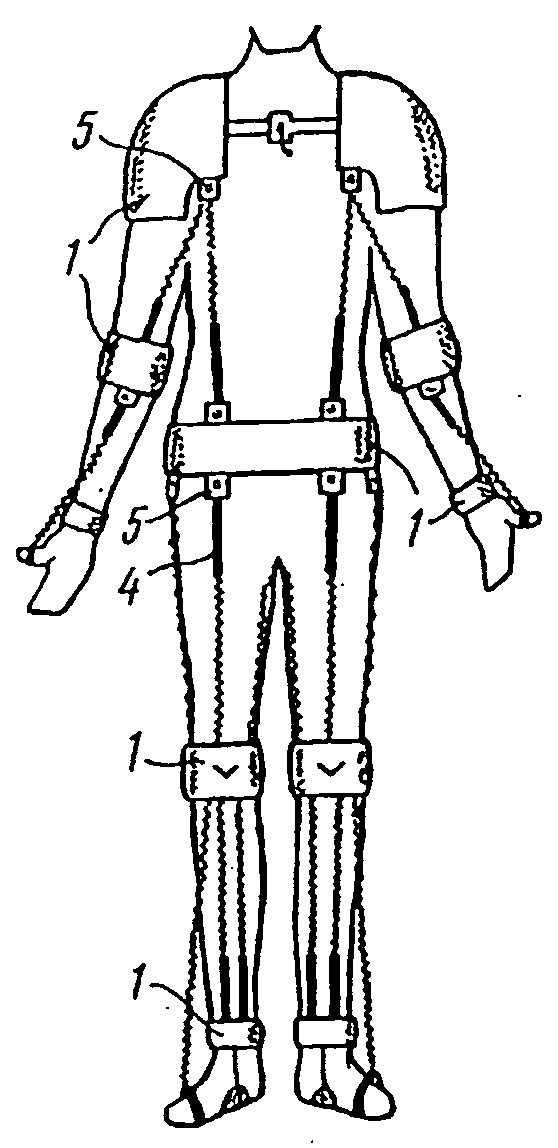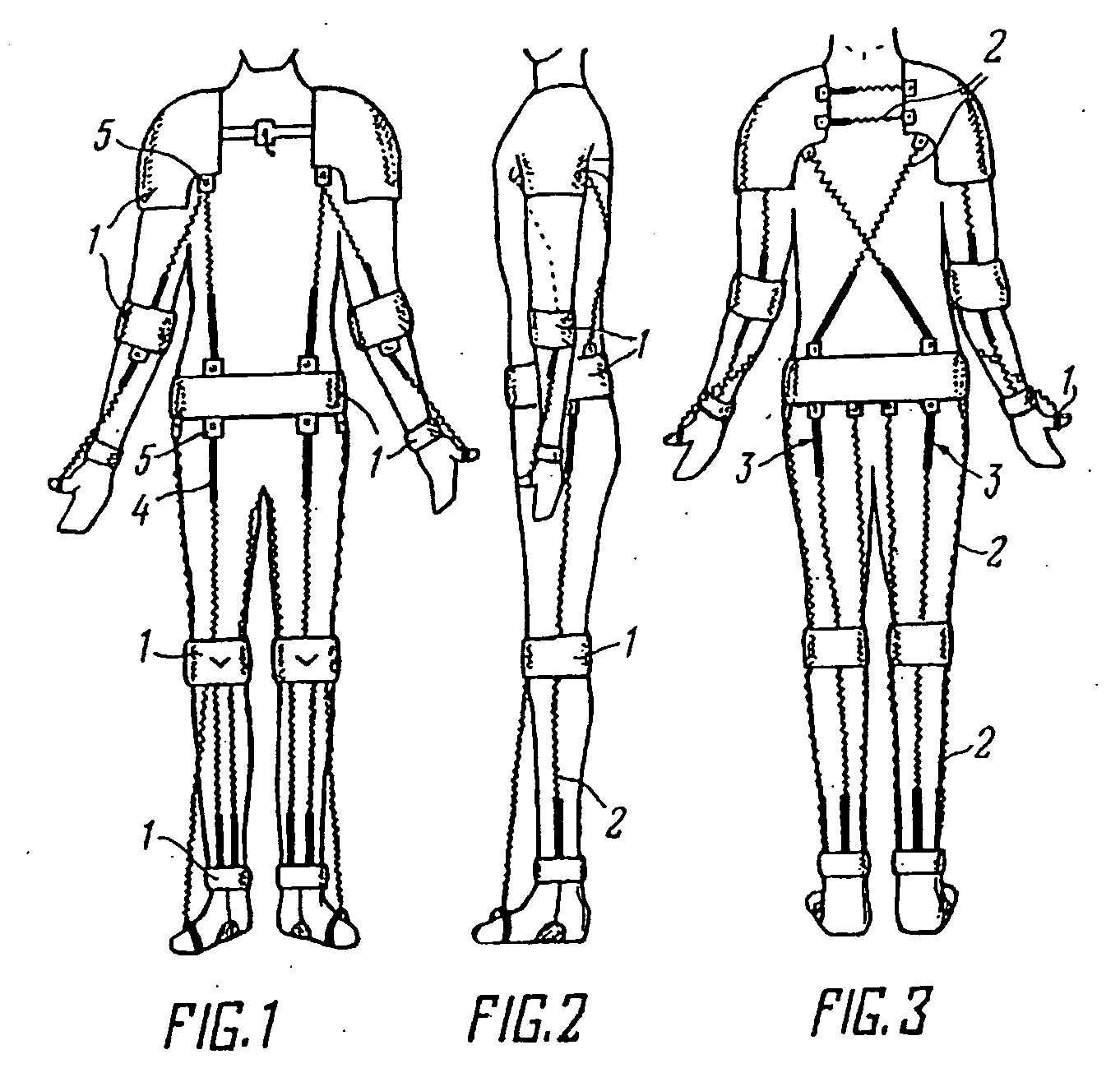Device for treatment of patients with disturbed posture and motor activity
a technology for patients with disturbed posture and motor activity, applied in the field of nonsurgical devices, can solve the problems of spastic phenomena, increased hypertension syndrome, urgent treatment of motor functions in infantile cerebral paralysis patients, etc., and achieve the effect of adding to the efficacy of treatmen
- Summary
- Abstract
- Description
- Claims
- Application Information
AI Technical Summary
Benefits of technology
Problems solved by technology
Method used
Image
Examples
example 1
[0050] Male patient B. K., 17. Diagnosis: infantile cerebral paralysis. The diagnosis has been established since the six-month age. By the time of treatment with the proposed device the patient had developed paralysis in the form of spastic diplegia. There occurred triple flexion in the lower limbs complicated by contractures in the ankle joints, internal rotation of the thighs, uncompensated body inclination forwards, difficulties in locomotion, phatologic gait; talipes equinovalgus in both feet (“rocking foot”), internal rotation of both arms, and difficult movements of the hands and fingers. The patient's intellect remained unaffected, as well as phrasal speech. There was noticed high level of psychologic motivation for therapeutic rehabilitation. Previously the patient has been treated medicinally and with the aid physiotherapy, as well as by correction with plaster bandages and solid plaster bars. However, the treatment produced but a transient effect.
[0051] The patient passed...
PUM
 Login to View More
Login to View More Abstract
Description
Claims
Application Information
 Login to View More
Login to View More - R&D
- Intellectual Property
- Life Sciences
- Materials
- Tech Scout
- Unparalleled Data Quality
- Higher Quality Content
- 60% Fewer Hallucinations
Browse by: Latest US Patents, China's latest patents, Technical Efficacy Thesaurus, Application Domain, Technology Topic, Popular Technical Reports.
© 2025 PatSnap. All rights reserved.Legal|Privacy policy|Modern Slavery Act Transparency Statement|Sitemap|About US| Contact US: help@patsnap.com


